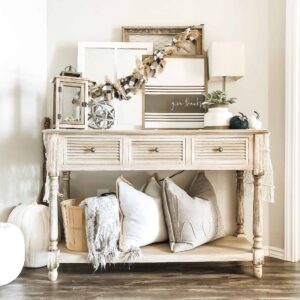The Playboy Mansion: Unveiling the Legacy of a Cultural Icon

Imagine stepping into a world where luxury meets hedonism. In this sprawling estate, Hollywood stars, rock legends, and cultural icons once mingled, sipping champagne by the pool as live peacocks roamed the manicured lawns. This is the Playboy Mansion, a legendary property that has been the backdrop to some of the most extravagant and controversial parties in modern history. Its iconic grotto, lavish interiors, and air of mystery made it synonymous with the Playboy brand and its founder, Hugh Hefner, whose larger-than-life persona turned the mansion into a pop culture phenomenon.
For decades, the Playboy Mansion wasn’t just a home; it was a symbol of indulgence, freedom, and rebellion. But behind its famous gates lies a history that’s as fascinating as it is complex. From its early days as a private residence to its heyday as the epicenter of Hollywood’s elite social scene and its eventual sale for a staggering nine-figure price, the Playboy Mansion continues to captivate the public imagination.
In this article, we’ll explore the history of the Playboy Mansion, delve into the staggering stats surrounding its real estate value, and examine its enduring impact on culture.
A Brief History of the Playboy Mansion
The Playboy Mansion, located in Holmby Hills, Los Angeles, was built in 1927 by Arthur Letts Jr., heir to a wealthy retail empire. Hugh Hefner purchased the property in 1971 for $1.05 million—a hefty sum at the time, making it one of the most expensive homes sold in LA during that era (Source: Los Angeles Times).
The Tudor-style mansion, which spans 21,987 square feet, features 29 rooms, including a wine cellar, game room, screening room, and the infamous grotto—a lush, cave-like pool area that became synonymous with the Playboy lifestyle. The estate also boasts sprawling grounds, with a tennis court, koi pond, and a zoo license, which allowed Hefner to keep exotic animals like monkeys and flamingos on the property.
The Playboy Era: Glamour, Scandal, and Influence
Under Hefner’s ownership, the mansion became a haven for celebrities, models, and socialites. From A-list movie stars to legendary musicians, the guest lists at Hefner’s infamous parties read like a who’s-who of Hollywood royalty.
A Symbol of the Sexual Revolution
The Playboy Mansion wasn’t just a luxurious home but a cultural statement. During the 1970s and 1980s, the mansion embodied the ethos of the sexual revolution, challenging societal norms and pushing the boundaries of mainstream media. Hefner hosted Playboy Jazz Festivals, charity fundraisers, and wild parties, cementing the mansion as a freedom of expression and decadence hub.
However, the mansion was also shrouded in controversy. Critics argued that it perpetuated objectification and excessive hedonism. While Hefner’s supporters viewed him as a champion of free speech and sexual liberation, others questioned the ethical implications of the Playboy empire.
The Real Estate Value of the Playboy Mansion
The Playboy Mansion’s notoriety and size make it one of the most valuable pieces of real estate in Los Angeles. Its location in Holmby Hills, one of the city’s most exclusive neighborhoods, further amplifies its worth.
Hefner’s Unique Sale Agreement
In 2016, the Playboy Mansion was sold for a jaw-dropping $100 million, making it the most expensive home ever sold in Los Angeles (Source: Wall Street Journal). The buyer was Daren Metropoulos, a billionaire investor and son of the co-owner of Hostess Brands.
However, the sale came with an unusual stipulation: Hugh Hefner would remain in the mansion until his death, essentially making him a lifelong tenant. Hefner died in 2017 at the age of 91, and property ownership was officially transferred to Metropoulos.
Current Market Value
Despite its initial $100 million sale price, the Playboy Mansion’s current market value has fluctuated. Real estate experts estimate its value today to be between $120 million and $150 million, depending on market conditions and the cost of potential renovations (Source: Forbes).
The mansion’s age and need for upgrades pose challenges for any potential resale, as many features, such as the cave and other dated amenities, would require extensive restoration to meet modern luxury standards.
Unique Features of the Playboy Mansion
The Playboy Mansion is more than just a house—it’s a world of its own. Here are some of the estate’s most unique and over-the-top features:
- The Grotto
The mansion’s most famous cave feature is a heated, cave-like pool area surrounded by tropical plants and rock formations. It became an iconic symbol of the Playboy lifestyle, appearing in countless media portrayals of the mansion.
- Zoo and Aviary
Hefner’s zoo license allowed him to house exotic animals on the property, including monkeys, peacocks, and even a pet alligator. The mansion also featured an aviary filled with colorful birds, adding to its whimsical charm.
- Private Screening Room
As a film buff, Hefner equipped the mansion with a state-of-the-art screening room where he regularly hosted movie nights for friends and guests. The room included plush seating, a library of films, and a vintage popcorn machine.
- Expansive Grounds
The property’s 5.3-acre lot includes rolling lawns, tennis courts, a koi pond, and a massive game house featuring arcade games, pinball machines, and a billiards table.
The Playboy Mansion in Pop Culture
The Playboy Mansion has been featured in numerous films, TV shows, and documentaries, further cementing its status as a cultural icon. Appearances in movies like Beverly Hills Cop II and The House Bunny brought the mansion to a broader audience, while reality TV shows like The Girls Next Door gave viewers an inside look at life within its walls.
Even after Hefner’s death, the mansion continues to fascinate the public. Documentaries such as Secrets of Playboy (2022) have shed light on the darker side of the Playboy empire, sparking debates about the mansion’s legacy and its role in shaping cultural perceptions of wealth, fame, and sexuality.
The Future of the Playboy Mansion
With Daren Metropoulos owning the estate, the Playboy Mansion is undergoing a new chapter in its history. Metropoulos reportedly plans to restore the property to its original 1920s design, preserving its historical significance while modernizing its infrastructure.
However, the mansion’s transformation has sparked questions about its cultural legacy. Can the property shed its Playboy image and become a symbol of architectural and historic preservation? Or will it remain forever linked to its infamous past?
Stats and Numbers: The Playboy Mansion by the Numbers
- Year Built: 1927
- Original Purchase Price (1971): $1.05 million
- Sale Price (2016): $100 million
- Size: 21,987 square feet
- Lot Size: 5.3 acres
- Number of Rooms: 29 (including 12 bedrooms and 21 bathrooms)
- Zoo License: The mansion was one of the few private residences in LA to hold a zoo license.
Conclusion: A Legacy That Endures
The Playboy Mansion is more than just a piece of real estate—it’s a cultural landmark representing an era of glamour, excess, and controversy. The mansion has left an indelible mark on pop culture and real estate history, from its role as Hugh Hefner’s personal playground to its position as one of Los Angeles’ most valuable properties.
As the property transitions into a new phase under Daren Metropoulos’ ownership, its legacy continues to evolve. Whether as a restored architectural masterpiece or a lasting symbol of the Playboy brand, the mansion’s allure endures, ensuring its place in the annals of American history.




